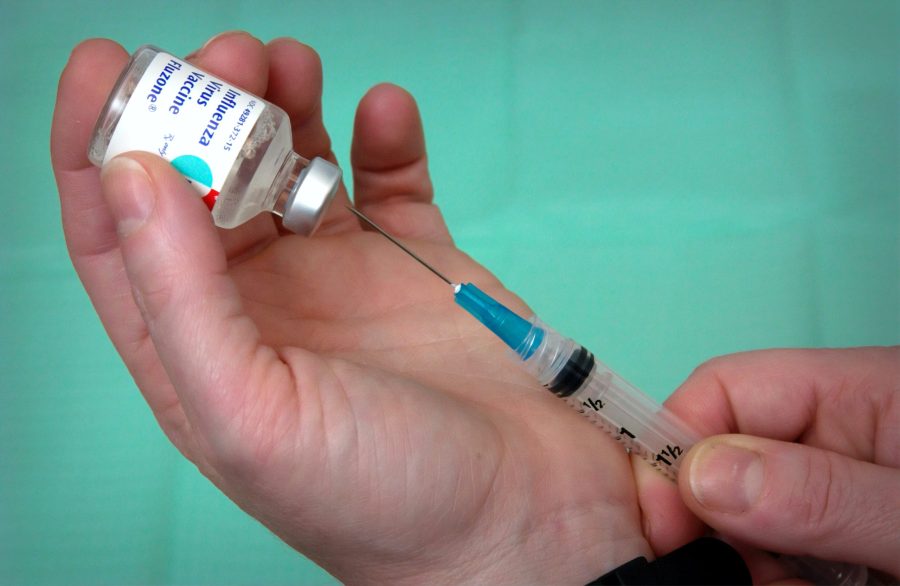On Oct. 8, the University of California’s Office of the President announced that it would be issuing a Flu Vaccine Mandate Executive Order. This systemwide executive order requires all “covered individuals,” including students, faculty, other academic appointees, and staff who are living, learning, or working on campus, to receive the flu vaccine or opt out by Nov. 19, 2021.
Following the guidelines of the Centers for Disease Control and Prevention (CDC), the executive order issued by the UC system provides detailed policies on how to prove vaccination status. It also includes the steps for opting out, the available health coverage, and implementations of the policy.
The Executive Order document issued by the UC system cites information from the CDC to illustrate the efficacy of the flu vaccine.
“Vaccination against the seasonal respiratory disease influenza or ‘flu’ has long been accepted as a safe and effective way to prevent millions of illnesses and thousands of related doctor and hospital visits every year,” the statement notes.
The CDC’s Advisory Committee on Immunization Practices (ACIP) has issued recommendations regarding influenza vaccination for the 2021-2022 season. In the recommendation, ACIP points out that widespread influenza vaccination of people will help reduce the strain on healthcare systems.
“Prevention of and reduction in the severity of influenza illness and reduction of outpatient visits, hospitalizations, and intensive care unit admissions through influenza vaccination also could alleviate stress on the U.S. healthcare system,” the advisory said.
In order to meet the flu vaccination requirements, covered individuals must receive or affirmatively decline influenza vaccination. Vaccinations will be offered on-site at any University location; covered individuals can also go to other alternative clinical sites, but they need to provide written documentation to the local vaccination authority.
For those who wish to opt out of the vaccination requirement, they need to complete a Vaccine Declination Statement and submit it to the location vaccination authority before Nov. 19, 2021. Masks or face coverings will be required for them on campus through the end of the flu season — even if COVID-19 requirements are loosened.
The university’s health plans will provide coverage for routine health maintenance vaccinations, including seasonal influenza vaccines, without copays to covered individuals and families.
Each university campus location will strongly encourage universal vaccination for all members of the University community, beyond merely covered individuals. These might include issuing promotional materials and offering vaccine fairs. According to a study published in 2017, the flu vaccine reduced hospital visits among adults by around 40%. Similarly, a CDC-supported study in 2018 showed that flu shots greatly lessened the risk of severe flu among adults, reduced the hospital visits and bed number by 37%, and also reduced the risk of being admitted to an ICU with flu by 82%.
The CDC estimated that during the last influenza season before the COVID-19 pandemic (2019-2020), 39 to 56 million people contracted flu illnesses, resulting in 410,000 to 740,000 hospitalizations, and 24,000 to 62,000 deaths. The CDC also notes that there was an unusually low flu activity during the 2020-2021 season, due to mitigation measures against COVID-19, such as wearing face coverings, staying home, hand washing, school closures, reduced travel, increased ventilation of indoor spaces, and physical distancing.
During the coronavirus pandemic, contracting COVID-19 has respiratory symptoms similar to influenza. In the following flu season, as both influenza and SARS-CoV-2 viruses will be circulating at the same time, ensuring universal vaccination against influenza is a higher public health priority than it was before the pandemic.
According to the California government’s official data, from Oct. 18 to Oct. 24, the average case rate among unvaccinated Californians 16 and older was up to 39.2 per 100,000/day, compared to 80.12 between Aug. 22-28. For those already vaccinated against coronavirus, this number dropped to 5.8 per 100,000, compared to 10.33 before. Based on current data, unvaccinated people were 6.8 times more likely to get COVID-19 than fully vaccinated people.
Statewide positivity rates and hospitalizations remain high. Every day, over 4,000 were hospitalized and more than 1,000 were treated for COVID-19 in intensive care units.
“As President of the University, I have concluded that critical steps must be taken to reduce the likelihood of severe disease among students, faculty and staff, particularly those on campus, and in turn to reduce the likelihood that our health systems will be overwhelmed.” President Michael V. Drake concluded in the Executive Order.
Updates to the mandate can be found on UC San Diego’s Return to Learn page. In order to receive a flu vaccine on campus, students can go to MyStudentChart and schedule an appointment, and employees can visit flu.ucsd.edu.
Image by Center for Disease Control via Unsplash















Malcolm Glennie • Dec 2, 2021 at 2:56 pm
Flu mandates are popping up in hospitals too, but these mandates are too overreaching and don’t factor in that some employees do not work closely with patients, or students, or even other coworkers in this new work-from-home culture we live in. Personally, I find mandates to be troublesome, that we would be willing to compromise a person’s livelihood or education based on a decision that should be their own.